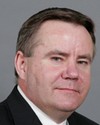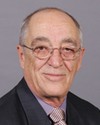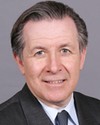Thank you very much, Mr. Chair and members of the committee.
Ken Miller and I will divide this up. I'll do the easy part; he'll do the hard part.
This is meant to be sort of VAC 101, in aid of your comparative study of Commonwealth and G-8 services and benefits.
Before I begin the presentation--and it's been handed out to you--for what it's worth, I think this is a very important study or undertaking from the public service point of view. On the one hand, it's based on surmise, but based on experience on the other.
In 2001, Veterans Affairs started off its first of many meetings of what is called the Senior International Forum, comprised of senior executives who are concerned with veterans affairs issues from Canada, the U.K., the U.S., New Zealand, and Australia.
We've had six or seven such meetings. I never would have imagined, being involved in this from the beginning, that they would be such a productive enterprise, and I want to talk to you a little about that. It has graduated up to the political level, where there is now a ministers international forum ongoing in Washington, as we speak, for the ministries of veterans affairs from the five countries. The degree of sharing of experiences, best practices, research, and business innovation have been quite remarkable and have benefited the veterans and their families in all five countries, I am certain.
Some of the results of that sort of collaboration, and certainly when you expand the nature of your study to the G-8 you'll find even more, I'm sure.... I mentioned business innovation. The best practices in service to veterans, be it electronic or in the traditional sense, are a direct result, I think it's fair to say, of our discussion, particularly with Australia.
Each time we get together in the Senior International Forum we outline in considerable detail the issues that each country is facing, and it is remarkable how similar they are. A lot of the advances that all countries have made in the diagnosis, treatment, and recovery from operational stress injury is a direct result of the sharing of best practices amongst the five countries.
The operational stress support system we offer, the peer support system, is now being modelled in other countries. We used the British Ministry of Defence job placement program and mirrored it pretty well to fit the Canadian circumstance in the new veterans charter.
We used the New Zealand case management system, and we're meant to. We get all the value of the research that these people do and that we do for no cost to our individual taxpayers. It's quite remarkable, especially when you look at the size of the U.S. Department of Veterans Affairs' budget in research. It's enormous. It benefits our own veterans and we get that for no cost. So the value of collaboration, and therefore the value of the study that you're undertaking, cannot be overstated.
I won't take you through all the pages on the chart because we'll go beyond our 20 minutes. Some of the pages I think are self-explanatory, or you can ask questions about them during the round of questions.
What I would do is take you to page 7, if I may. Page 7 shows a graph. What you're seeing there is the changing proportion of our population over time, where survivors and Canadian Forces veterans begin to assume a larger and larger proportion of our workload, and therefore should also become a larger and larger part of our policy concern.
If you look at expenditures in the portfolio area, you'll see a very large proportion of disability awards and disability pensions. As you can see there, health care, made up of home care and other VIP services, treatment benefits, and long-term care, is about $900 million. So it's a fair amount of investment, and that investment is made in cooperation with provinces. We don't duplicate what provinces offer. We offer what provinces don't offer, and if they do offer it, we may be engaged in a case management way, but we're not engaged in a payment way.
The administrative costs for Veterans Affairs, I think we've calculated at about 9% of that overall $3.2 billion.
If we turn to page 10, the largest program is the disability pension, and we'll later on come to its new veterans charter equivalent, the disability awards program. That has been in existence since 1919. My sense is it is a very generous system. We have made comparisons to equivalent disability benefits in the other three Commonwealth countries and the U.S., and ours is as generous or more generous than any of the others.
I think we had about 30,000 applications last year for disability awards or disability benefits. So it's quite an active program. Since about half of those pension applications came from World War II and Korea veterans, it gives you an indication that the long-term effects of armed conflict are quite real, and they need to be borne in mind, I suppose.
The war veterans allowance is an income support program. It's not used much any more because it's been largely replaced by the Canada Pension Plan, OAS, and GIS, but there's a small top-up available.
On page 11 I talk about the health care program. The best-known one, and it's been around since 1981, is the veterans independence program. It is the only national home care program, other than the one in Australia, that any of the four countries we deal with have for veterans or their own citizenry, including Canada. It's an extremely effective program, in my view. It keeps many people at home, independent, and in their own communities. It's very popular, and everybody, as you probably know, seems to want to get access to it. That's quite understandable, and it's in many ways quite a good thing. It's certainly quite a strong endorsement of the policy framework for it.
CF veterans can get access to the veterans independence program when the need for it is related somehow to service. Although its utilization is primarily based on age, its eligibility is not. Any Canadian Forces veteran of any age can get the benefit if it is needed.
With regard to treatment benefits, to give you an indication of the scope, there are about 8.2 million transactions a year in the treatment benefit account, at an annual cost of about $260 million. About 110,000 people have the eligibility card. It's used for services from any authorized health supplier in the country. There are in the neighbourhood of 60,000 to 65,000 of them. You don't have to go into a VAC centre to get your health care. You can go next door to the pharmacy or across to whatever is there.
Long-term care is an important element of the service we provide. We can provide it in any number of locations. We have about 3,300 to 3,400 departmental contract beds reserved for veterans. They are in institutions we used to own that we transferred to provinces. The disadvantage is that they are located in about 14 sites, and not all of Canada's veterans are located near those 14 sites. So we also give them access to any community care bed that's available and licensed by the province. That accounts for the 7,400 veterans we have in community facilities. The disadvantage we used to have before VIP came along was that you had to go to one of those 14 sites. If you happened to live in a part of New Brunswick, you'd have to go to Saint John. If you happened to live in North Bay, you'd have to come to Sunnybrook, in Toronto. Now you can stay wherever there is a licensed community bed. It's very popular. Most veterans prefer to stay there.
We have a funeral and burial program in cooperation with the Last Post Fund. The slide speaks for itself. There is an interest in looking at the rates we pay. People are eligible if the death occurred as a result of war service or if the veteran of overseas service can't afford the funeral using his or her own resources.
These are the traditional programs we've had. They are primarily age-related programs. The slide earlier showed relatively rapid growth in the number of younger CF veterans and their survivors. So we had a look at this, along with the Canadian Forces Advisory Council, between 2003 and 2005. What we found was that these traditional programs were not aiding those younger veterans who were making the transition to civilian life. They were experiencing poor transition, fragmented services, certainly a very outdated approach, and many unmet needs. So it resulted—and I'm giving quite a short summary—in quite significant deliberations on the new veterans charter.
At this point, Ken, maybe I'll turn it over to you to take the committee through the new veterans charter.











